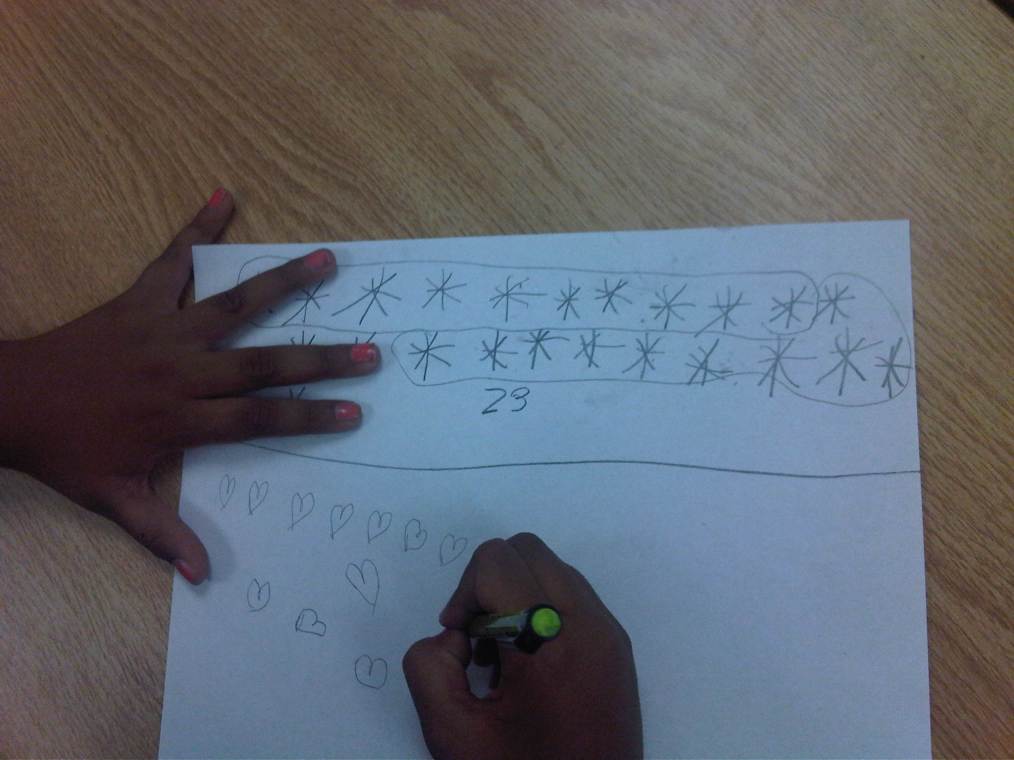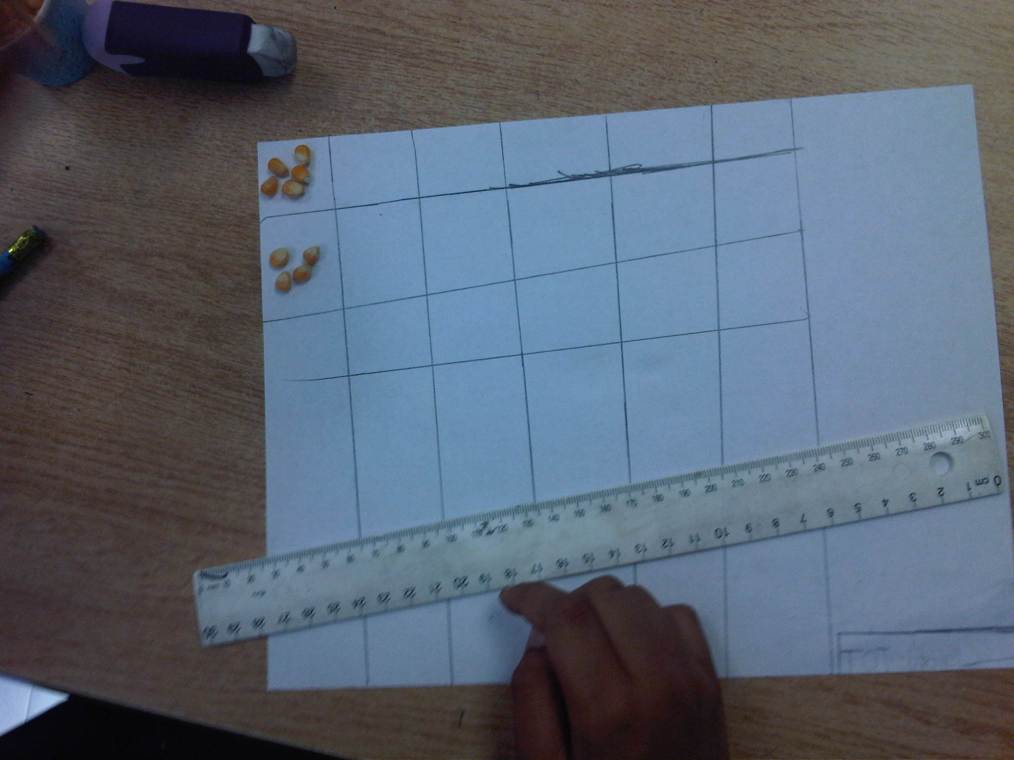Wow…I haven’t posted in a long time. It’s absolutely a busy time of year, but then again, what time of year isn’t a busy time? Having said that, I had to post because I had such an exciting lesson on my mental math strings today. Once a week, I dedicate a forty minute period to “whiteboard math,” focusing on mental math strings. This is an approach inspired by the work of Catherine Fosnot in her book, Young Mathematicians at Work. Essentially, a “string” is a set of computations that builds understanding towards utilizing a particular strategy. I have been focusing on the strategy of “jumping by tens” to add two numbers together. For example, I started my string with 63+10 and I asked my students “How many jumps of ten do I need to make?” Using an open number line, students begin with the bigger number and make one jump of ten to add. This particular activity hits several strands: addition, patterning, and place value.
I have attached pictures of my students’ work. Please note that it has taken me two months to get students to this point (“training” them on how to use an open number line, how the jumps are made, including the computations and numbers on the line, etc.). However, perseverance has paid off and I managed to get through an entire string in 40 minutes, with much success! Here is the string I used today:
63 + 10
30 + 63 (I put the larger number second sometimes to reinforce the idea that they begin with the larger #)
63 + 13
45 + 25
65 + 34
132 + 41
If anyone is interested in learning more about strings, check out this blog: http://mathcoachondemand.blogspot.ca/2011/03/mental-math-strings.html














